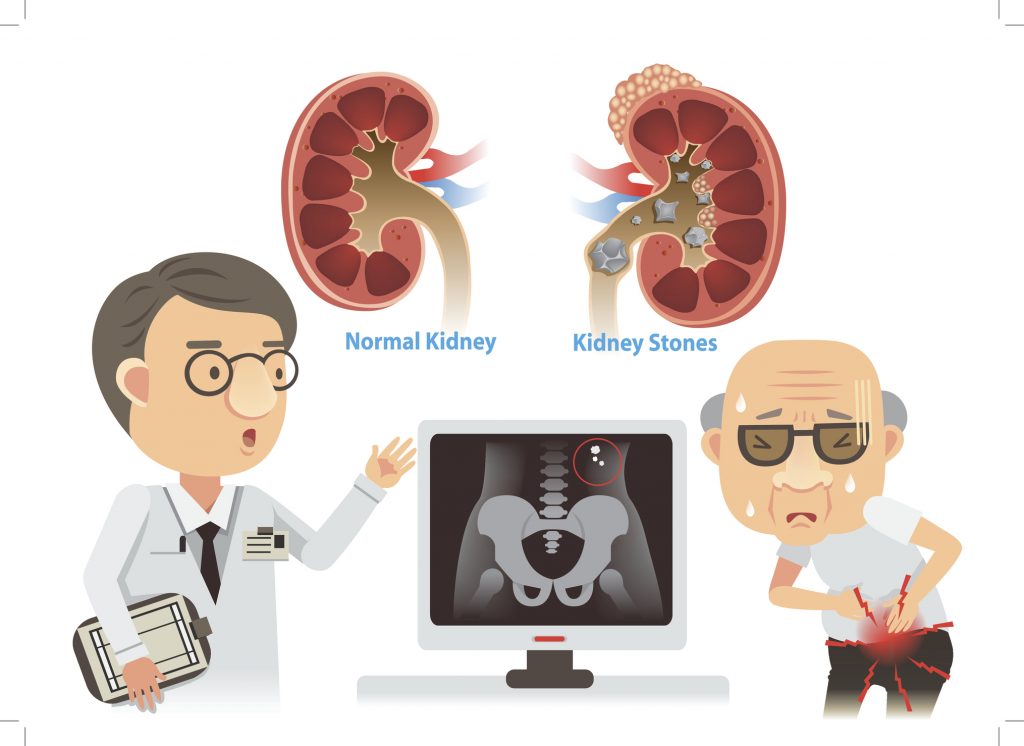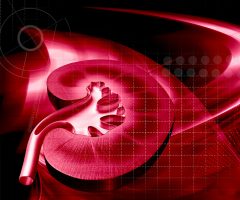Blast them or pass them: treatments for kidney stones

If you have ever had a kidney stone, or you know someone who has, you are likely aware of how painful they can be. Kidney stones are salt and mineral particles that form in the urine. They cause pain (renal colic) when they obstruct the urinary tract.
Various treatments are used to remove kidney stones, depending on the size of the stone and its location.
Pain management
Part of any treatment measure for kidney stones is pain management. Depending on the level of pain, physicians may recommend oral pain medication, such as acetaminophen, ibuprofen or naproxen; intravenous pain medication; or anti-inflammatory medications in tablet or suppository form.
Passing stones
Most small kidney stones can be passed without the need of invasive treatment. Drinking lots of water (2 to 3 litres per day) and taking pain medication may be all a patient needs to pass a stone. Some patients will also be prescribed a daily oral medication called an alpha-blocker to relax the muscles of the ureter and facilitate stone passage.
Dissolving stones
Most kidney stones cannot be dissolved. However, uric acid-type kidney stones may disintegrate with special medication that makes the urine less acidic.
Blasting stones
Shock-wave lithotripsy is a non-surgical treatment that uses sound waves to create strong vibrations that blast kidney stones into tiny particles. X-rays or ultrasound are used to target the stone(s), and patients are given a sedative to help them relax and to minimize any pain. Following treatment, the remaining stone fragments pass through urine. Passing the small stone fragments often takes several weeks.
Shock-wave lithotripsy may not be possible or effective for patients with very large or hard stones and patients who are pregnant or overweight.
Removing stones surgically
Occasionally, kidney stones can’t be passed or blasted, and more invasive measures are required. If the stone is trapped in the ureter, it may be removed in a procedure called a ureteroscopy. In this type of procedure, a narrow tube is passed through the urethra and bladder into the ureter. The stone is then removed by trapping it in a wire basket and carefully removing it. Patients undergoing a ureteroscopy are given an anaesthetic, to avoid discomfort during the procedure.
Percutaneous nephrolithotomy (PCNL) is a surgical procedure used to remove larger and more challenging kidney stones. A scope is passed through a small skin incision made in the flank or back and then inserted into the kidney. Patients are given an anaesthetic for the procedure and remain in the hospital for a few days of recovery.
Symptoms of kidney stones
Kidney-stone pain, called renal colic, often starts in the flank (between the ribs and hip) or lower back, but may move to the lower abdomen, groin, genitals or inner thigh, as the stone moves down the urinary tract. The pain may come in waves and fluctuate in intensity. Other common symptoms include the following:
- Changes in urination: difficulty urinating, pain during urination, persistent need to urinate, urinating small amounts, cloudy or foul-smelling urine, odd-coloured urine (pink, brown, red)
- Nausea and vomiting
- Fever and chills
When should you go to the emergency room for treatment?
Make an appointment to see your family doctor, if you suspect you have a kidney stone.
We recommend that you go to your nearest emergency room for immediate treatment under the following circumstances:
- Your pain is not managed with over-the-counter pain medication,
- You have only one kidney,
- You have a fever of over 38 degrees Celsius or 101.5 degrees Fahrenheit,
- You have persistent nausea and vomiting,
- You have decreased kidney function due to another medical condition, such as diabetes or kidney disease, or
- You have blood in your urine or you have difficulty passing urine.




